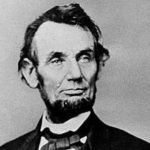Henry Ford was perhaps one of the most important entrepreneurs in the world, because it was his vision that allowed for the mass production of cars. Known by many as the creator of the assembly line, the reality is a little bit more complicated than that. Henry did not invent the assembly line nor did he invent the automobile, but he invented a perfect system of management that allowed for both of those items to be combined into one perfect result: the creation of the Model T.
Henry’s life began on a farm in Michigan in 1863. He didn’t particularly care for life on the farm and when his mother died when he was 13, there was an expectation that he would take over the work. His interest in farming was nonexistent, but rather the boy was drawn to mechanical work. He had the reputation of a watch repairman in his neighborhood and was constantly obsessed with mechanics and machines. He eventually made his way to Detroit where he would apprentice as a machinist for some time, learning all about the mechanical engineering trade.
Recommended Reading
Who was Grigori Rasputin? The Story of the Mad Monk Who Dodged Death
FREEDOM! The Real Life and Death of Sir William Wallace
Diverse Threads in the History of the United States: The Life of Booker T. Washington
It was in Detroit that Ford was able to find his true passion: his eyes came across a gasoline engine and it captured is imagination. He began working at the Edison Illumination Company and worked enough to the point where he had enough of a disposable income to invest it in his own projects. He began furiously working at developing a new kind of vehicle that he named the Ford Quadricycle. The Quadricycle was an automobile that seemed interesting enough to attract investors. Thomas Edison himself looked at the model and was impressed, but since the Quadricycle didn’t really have a lot of controls, being able to only go forward and steer left to right, Edison suggested that Ford begin to improve the model.
And that’s exactly what Ford did. The man spent a great deal of time working on improving it over and over, working to find perfection with his vehicle. The horseless carriage scene was relatively new but it did exist. The problem was that automobiles were extremely costly and only the richest of the rich could afford to own such contraptions. Ford decided that he would take his design to the market and give it a shot by starting his own company known as the Detroit Automobile Company in 1899. Unfortunately, this wasn’t a particularly effective company due to the fact that production was slow, the product wasn’t great and most people weren’t interested in paying for the Quadricycle. He wasn’t able to create enough Quadricycles in order to sustain his own company, forcing him to close the doors to the Detroit Automobile Company.
At the time, automobile racing was beginning to come into existence and Ford saw that as an opportunity to promote his designs, so he worked hard on refining the Quadricycle into something that could be functionally capable of winning races. This would go on to get him the attention that he desired, pulling in enough investors to help found his second company, Henry Ford Company. The only problem was that the investors and owners of the company weren’t particularly people who enjoyed Ford’s constant desire to renovate and innovate, as he kept changing the designs over and over again in a bid to improve the vehicle. There was some contention and Ford ended up leaving his own company to start something else. The company would go on to be renamed to Cadillac Automobile Company.
Ford’s focus on racing helped push innovation and captured the interest of those who were looking for a good business opportunity or were at least interested in cars in general. In 1903, Henry Ford made the choice to once again start his own automobile company this time naming it Ford Motor Company and bringing on a large host of investors and business partners. With the money and the talent assembled, he put together the Model A car. The Model A began to sell relatively well and he was able to sell over 500 of these automobiles.
The only problem with the Model A was that it was an expensive piece of machinery. Henry Ford didn’t simply want to get rich, he wasn’t there to build cars, but rather he wanted to make the automobile a household item. His dream was to make vehicles so cheap that everyone could own them, that they could simply replace the horse as a mode of transportation forever. His dream led to the creation of the Model T, an automobile designed to be affordable and accessible to just about anyone. From its introduction in 1908, the Model T became a very popular vehicle, so much so that Henry had to halt sales due to the fact that he couldn’t fulfill any more orders due to the demand.
While that might seem like a good problem to have, this was actually a nightmare for Henry. If a company couldn’t fulfill orders, they couldn’t make money and if they couldn’t make money, they’d be forced to close down. Henry scrambled for solutions and came up with a plan: he’d break everything down into an assembly line and have workers focus on just one thing at a time, then pass it along to the next worker. The assembly line existed for some time before Ford came along, but he was the first to use it in an industrialized method. He is essentially the author and creator of mass industrialization. Over time, the Model T’s production time was drastically cut and within a year, it took only an hour and a half to make a Model T. This meant that not only could they keep the product up with demands, but he was also able to cut down costs. The Model T would not only be quickly made, but it was also cheap enough for people to want to use.
Needless to say, this changed how America did just about everything. The introduction of individual transportation of this degree created an entirely new culture. Motor clubs and roads began to be developed and people were now able to go farther out than ever before without all of the strain of regular travel.
The only problem with Ford’s system of production was that it burned out people at a very fast rate. Turnover was incredibly high due to the stress and strain of the workers being required to build dozens of cars per day and without a competent workforce, Ford would be in trouble. So, in another trailblazing move, Henry Ford created the concept of a high work wage for the worker. He paid his factory workers an average of $5 a day, which was double the regular wage of a factory worker. This raise of price was a major boost to the company as many people began travelling straight to work for Ford, despite the hard hours and long working conditions. He also created the concept of the 5-day workweek, making the executive decision to limit the amount a time a worker could have, so that they were able to be more effective during the rest of the week.
With these contributions, Henry Ford can easily be seen as the pioneer of efficiency and our current work culture, as the invention of the 40-hour work week and high wages for workers as an incentive has been pulled into American culture as a whole. Ford’s outlook on the worker was a very humanitarian ideal and he greatly desired to make his company one where the workers were free to innovate and were rewarded for their work.
However, just because Ford’s life was one that was focused on creating a major good for the benefit of all Americans doesn’t mean that he was free from controversy or immorality. Perhaps one of the hardest pills to swallow about such an intelligent innovator was the fact that he was a notorious Anti-Semite. He sponsored a publication known as the Dearborn Independent, a periodical that went on to accuse the Jews of starting the first world war in order to make money and increase their financial status in the world. Ford believed greatly in the Jewish conspiracy, the idea that the Jews were secretly in charge of running the world and were working hard to gain control over everyone. He looked at his work in the Dearborn Independent as both the sponsor and a contributor to the articles as important enough to warrant his attention. This did not rest well in the Jewish community.
Latest Biographies
Queen Zenobia: The Charismatic Empress of Ancient Syria
Eleanor of Aquitaine: A Beautiful and Powerful Queen of France and England
Frida Kahlo Accident: How a Single Day Changed an Entire Life
To make matters worse, Ford’s work was quickly picked up by the German people, one of which included Hitler and garnered enough interest from them to cause them to praise Ford for his ideas. Later on, Ford would attest that he never wrote any of the articles, but the fact that he allowed them to be publicated under his name made him guilty. The articles were later put together into a compilation known as The International Jew. As the Anti-Defamation League came against him, there were a great deal of pressure put on Ford, causing him to apologize for what he had done. The decision to apologize was most likely a business decision, as the pressures were costing him and his company a great deal of business. The International Jew continued to be in publication until about 1942, when he was finally able to force publishers from distributing it any further.
Within the Nazi community, as Germany rose to power, the International Jew was distributed amongst the Hitler Youth and his work influenced many a young German boy to feel anti-Semitic hatred towards the Jews. Why was Ford like this? It’s hard to really know, but chances are it was due to the fact that as the Federal Reserve was coming into existence, there Jewish people involved with the Reserve. As the Federal Reserve was given the powers to control and regulate American currency, it is possible that Ford felt a great degree of anxiety and fear of seeing individuals that he didn’t see as American taking control of the Reserve like that. Those anxieties and fears were unfounded of course, but as America continued to have a large influx of Jew immigrants from all over the world, it wouldn’t be impossible to imagine that he began to worry about the security of his own nation.
The reality of Henry Ford was that the man made two tremendous contributions to the world, he was the one to kick off the automobile industry in such a way that made it possible for just about every American to reasonably be able to acquire one and he created an entirely new way of treating workers in a factory. He had a tremendous impact on America for the good. At the same time, however, the man had made a choice long ago to allow his feelings of prejudice and anger towards a race overtake him, enough so that he would write about it in publications that would outright condemn people for nothing more than their nationality and religion. Whether he truly repented of his actions, we’ll never know, but we can know one thing: you can do one-hundred good things in the world, but you cannot take off the stain of prejudice against the innocent. Ford’s legacy will be one forever marred by his anti-Semitic beliefs and actions. He might have changed the industrial world for the better, but for a certain group of people that he didn’t like, he made their lives a lot harder.
Explore More Biographies
John Ford: Life Before the Director’s Chair
Queen Elizabeth Regina: The First, The Great, the Only
America’s Favorite Little Darling: The Story of Shirley Temple
Brontë Sisters: The First Family of Literature
Malcolm X: Early Life, Nation of Islam, Assassination, and More
The Paradoxical President: Re-imagining Abraham Lincoln
Ford died in 1947 of a cerebral hemorrhage at the age of 83. His car company had been losing a lot of money as well and while Ford did a tremendous job of kicking off the auto industry, due to his short-sighted practices and desire to hold onto tradition no matter what, the company was never able to achieve the real potential that it had when he was still alive. Still, to this day, Ford Motors does stand as a testament to American ingenuity, industrialism, and desire for excellence.
READ MORE: The History of Marketing
Sources:
Henry Ford: http://www.biography.com/people/henry-ford-9298747#early-career
The Famous People: http://www.thefamouspeople.com/profiles/henry-ford-122.php
The Man Who Taught America to Drive: https://www.entrepreneur.com/article/197524
Apprentice Yourself In Failure: https://www.fastcompany.com/3002809/be-henry-ford-apprentice-yourself-failure
Anti-Semitism: http://www.pbs.org/wgbh/americanexperience/features/interview/henryford-antisemitism/











